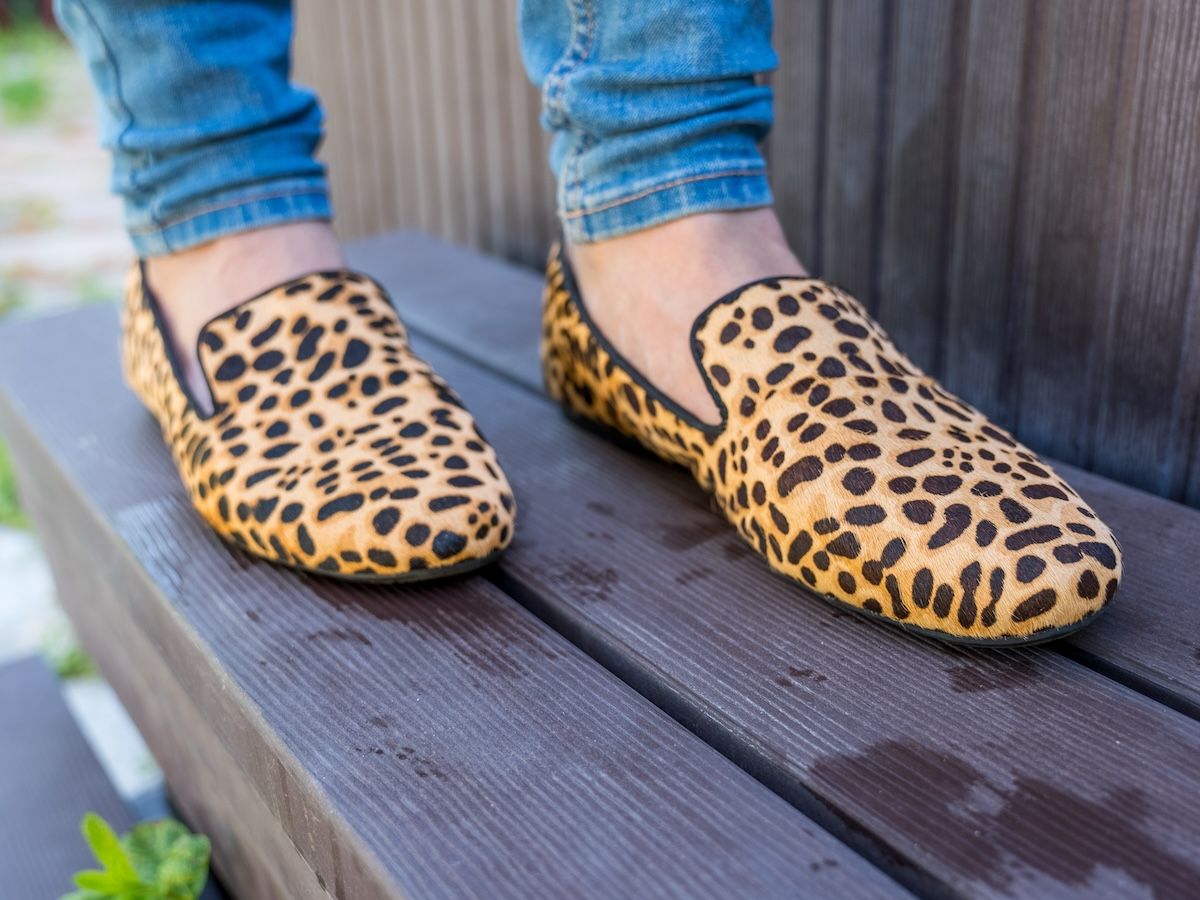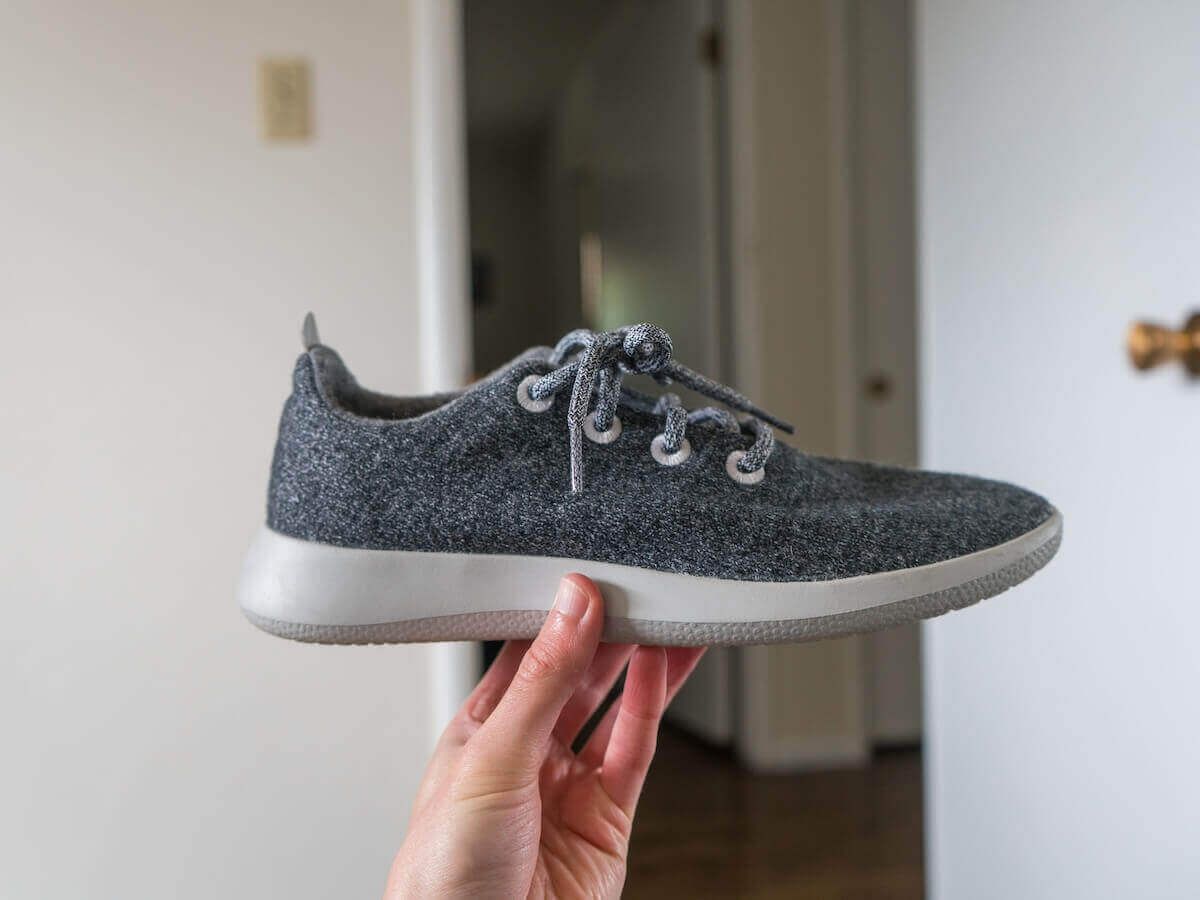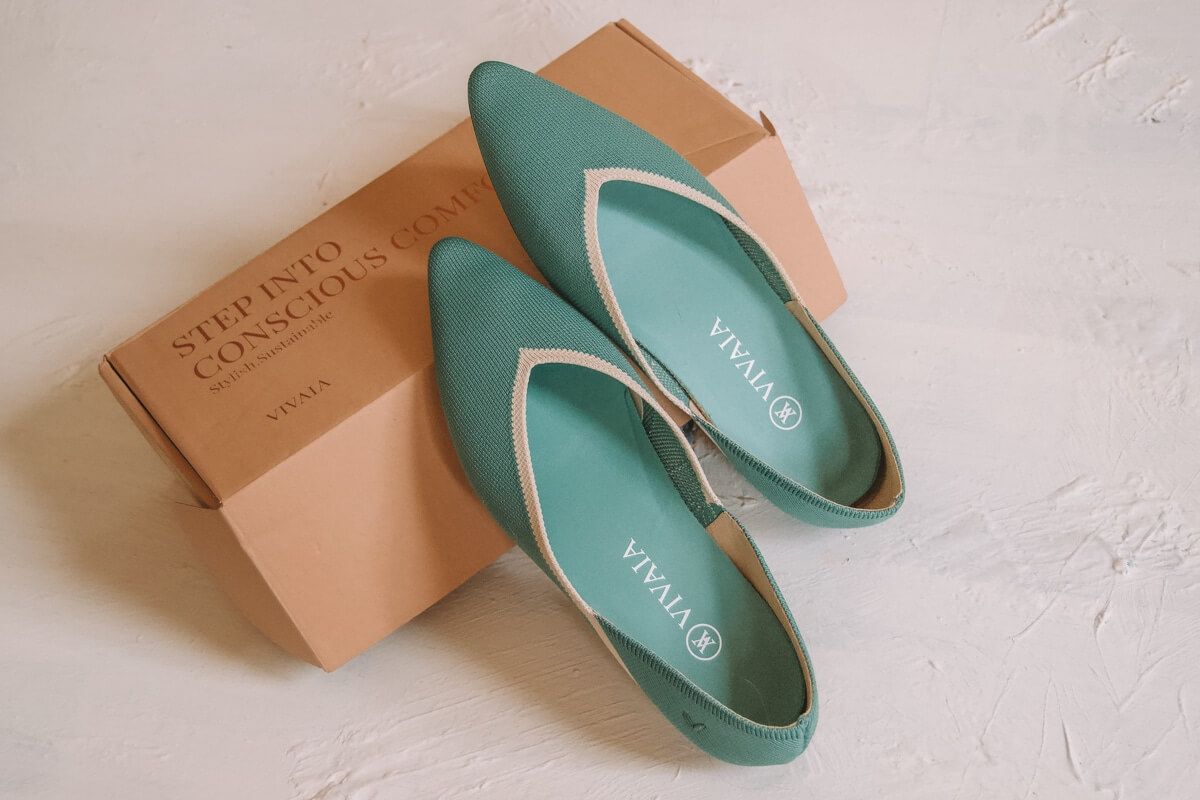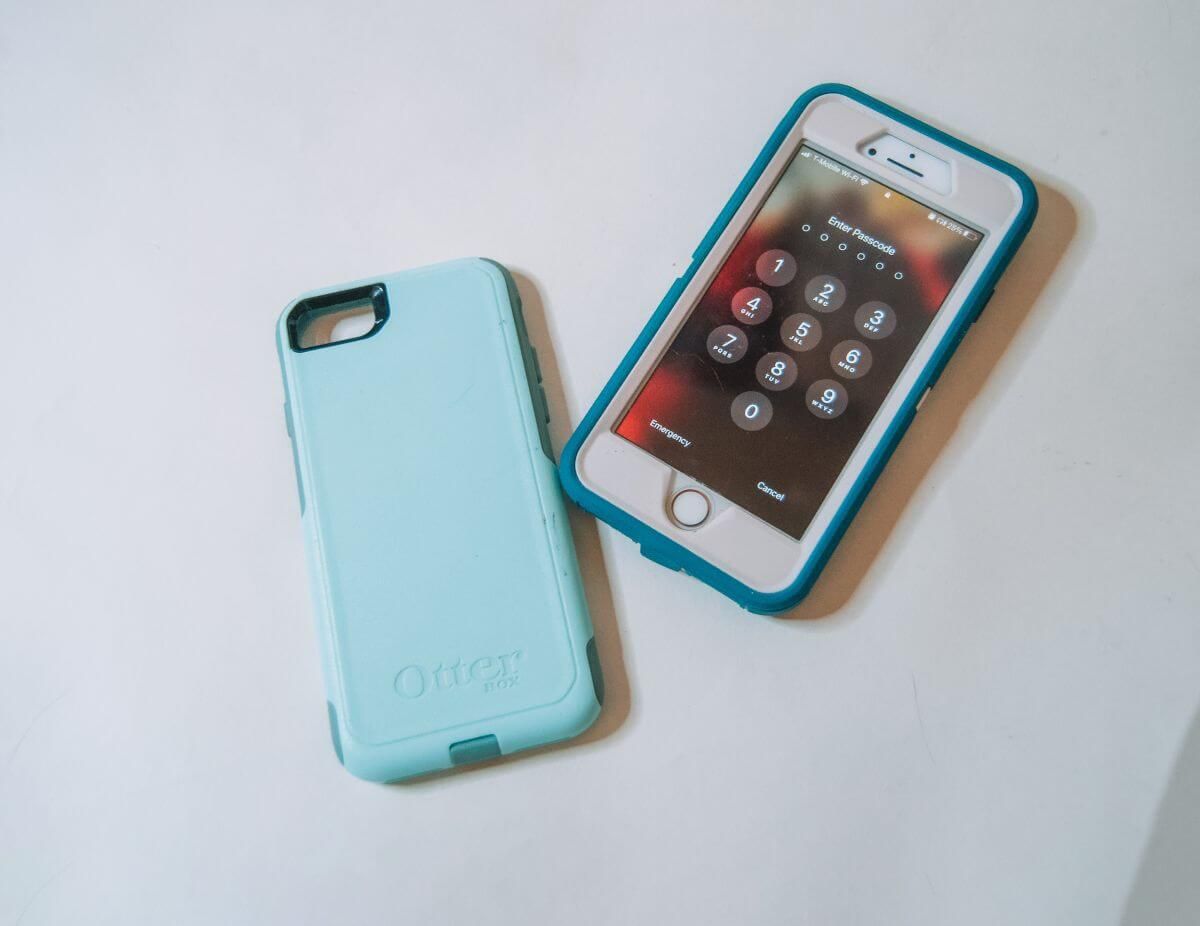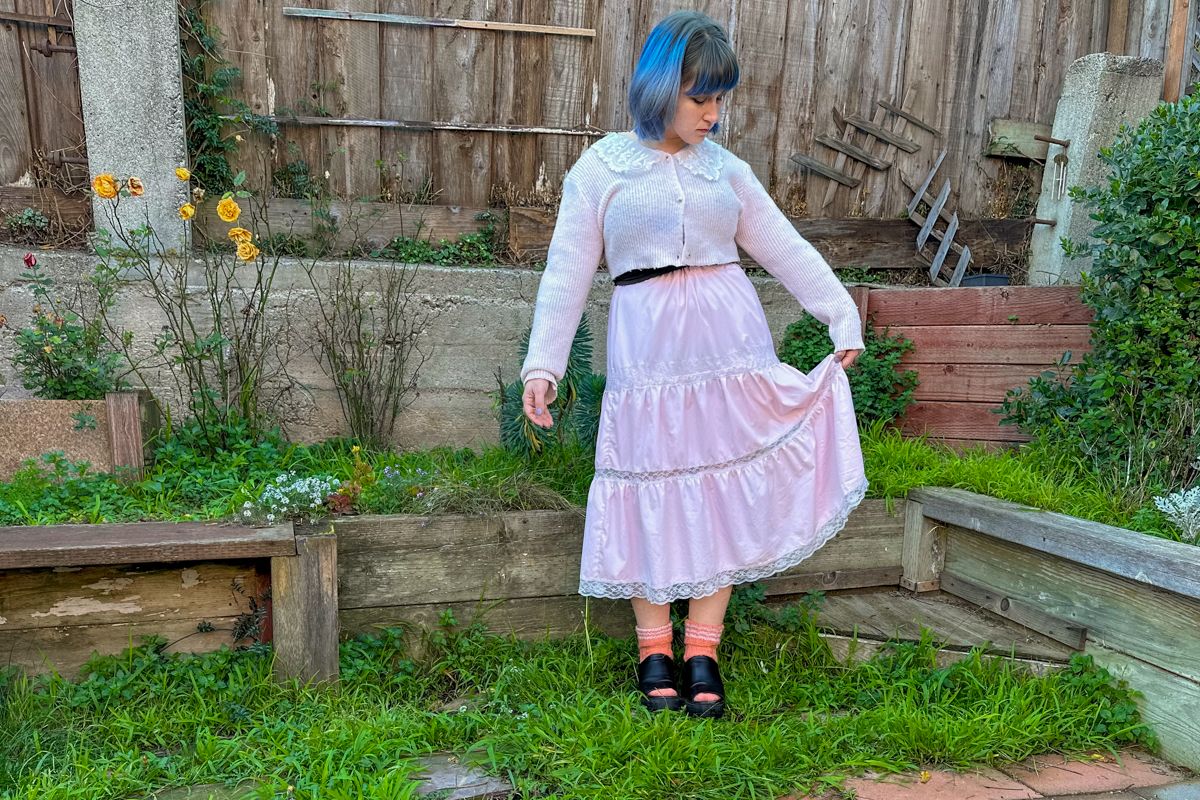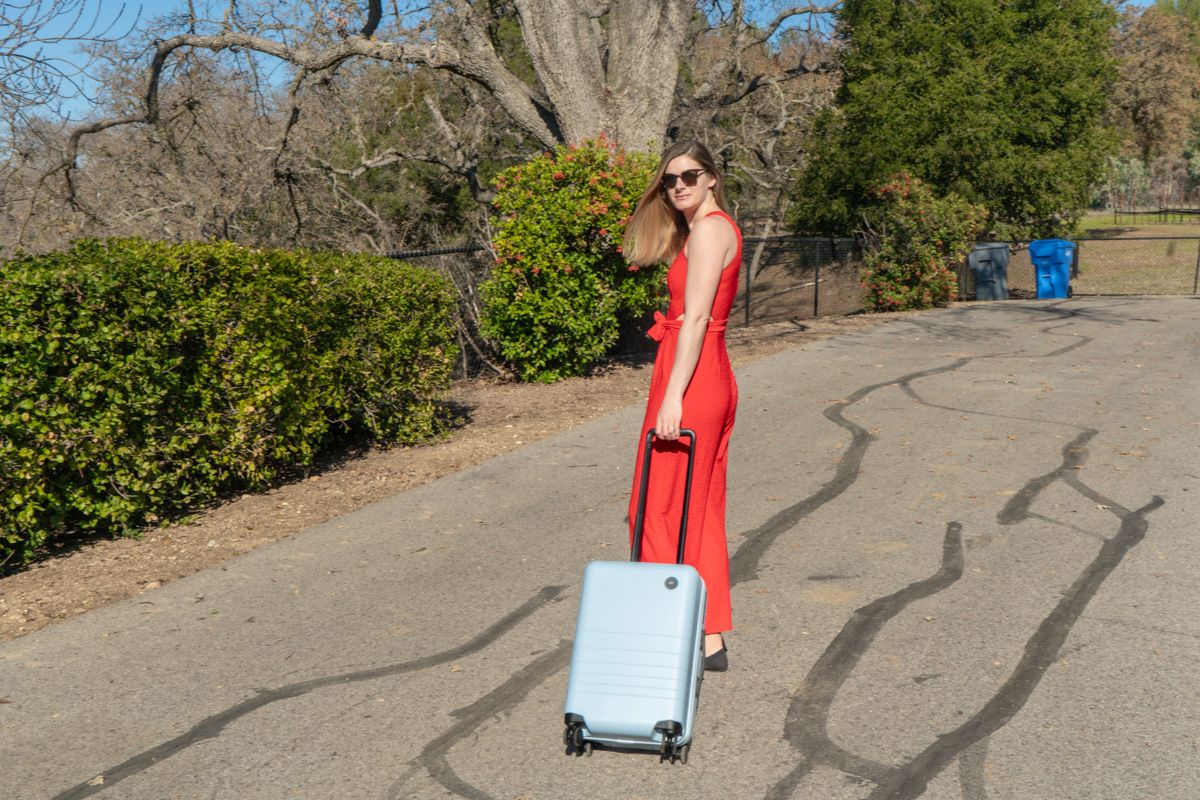TL:DR: I prefer the Otterbox Symmetry over the Otterbox Defender because of the slimmer design of the Symmetry. Here are the key takeaways from my Otterbox Symmetry vs Defender Series review:
- The Defender comes with a holster and belt clip, but the slim Symmetry is pocket-friendly.
- Switching out Symmetry cases is easy, unlike the multi-layer design of the Defender, which makes cleaning inside or changing cases a pain.
- The Defender excels in heavy-duty protection, but the Symmetry offers sufficient protection against everyday drops and bumps without adding excessive bulk.
- Symmetry cases are less expensive than the Defender.
A good smartphone case should be both protective and stylish. Not only does it make your life easier by protecting your phone from damage, but it comes with you everywhere and is likely to always be close at hand.
If you’re familiar with Otterbox cases, then you know them to be rugged phone cases built to protect your smartphone from dusty conditions, dirt, and high drops.
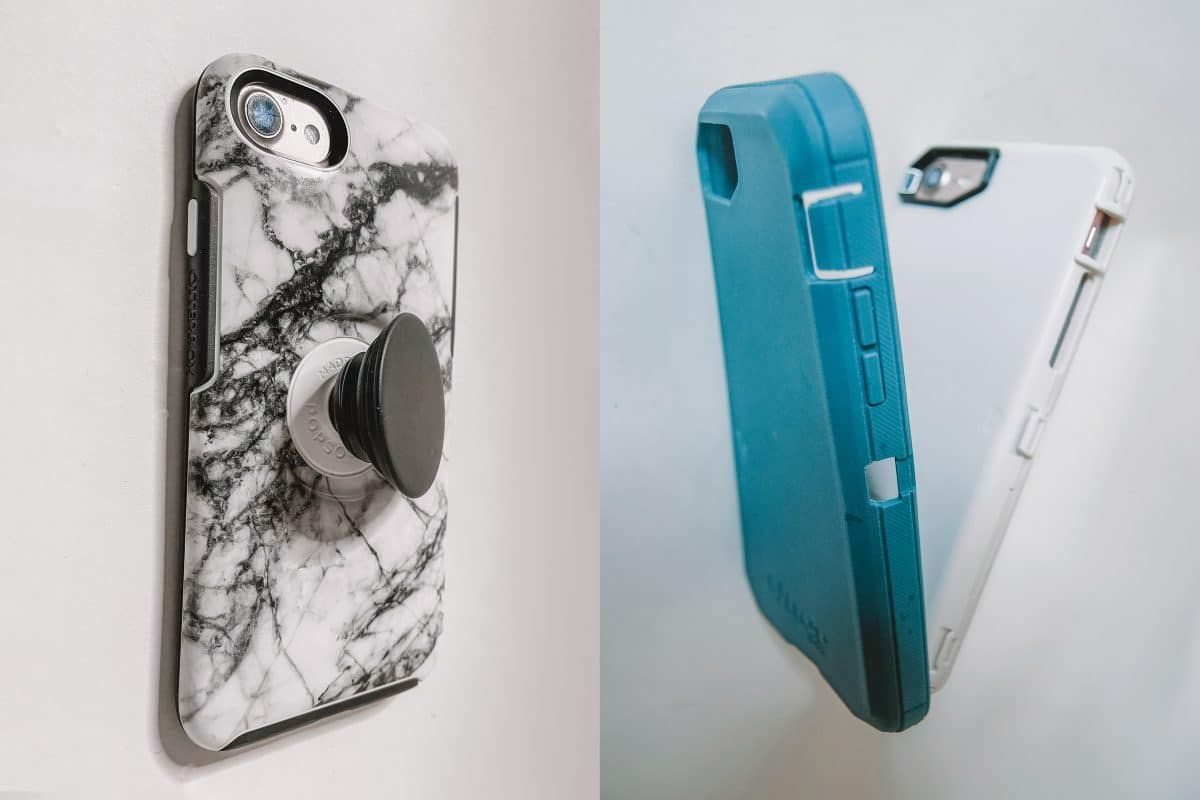
But not all Otterbox smartphone cases are the same. Otterbox makes protective cases in many different styles, each with varying degrees of protection.
I tried out three different Otterbox cases at once to determine which one was best for me, and I compared the strengths and weaknesses of each case. Now, it’s time to look at two of those Otterbox cases on opposite ends of the spectrum from each other.
The Otterbox Defender is their most rugged case, offering the highest level of protection. In contrast, Otterbox Symmetry cases have comparably less protection but have a slimmer and more stylish design.
So, which type of phone case is best – rugged protection or slim and sleek? Is the Otterbox Symmetry or Defender better?
In this article, I’ll compare the Otterbox Symmetry vs Otterbox Defender Series and take you through which case was my top pick to protect my iPhone.
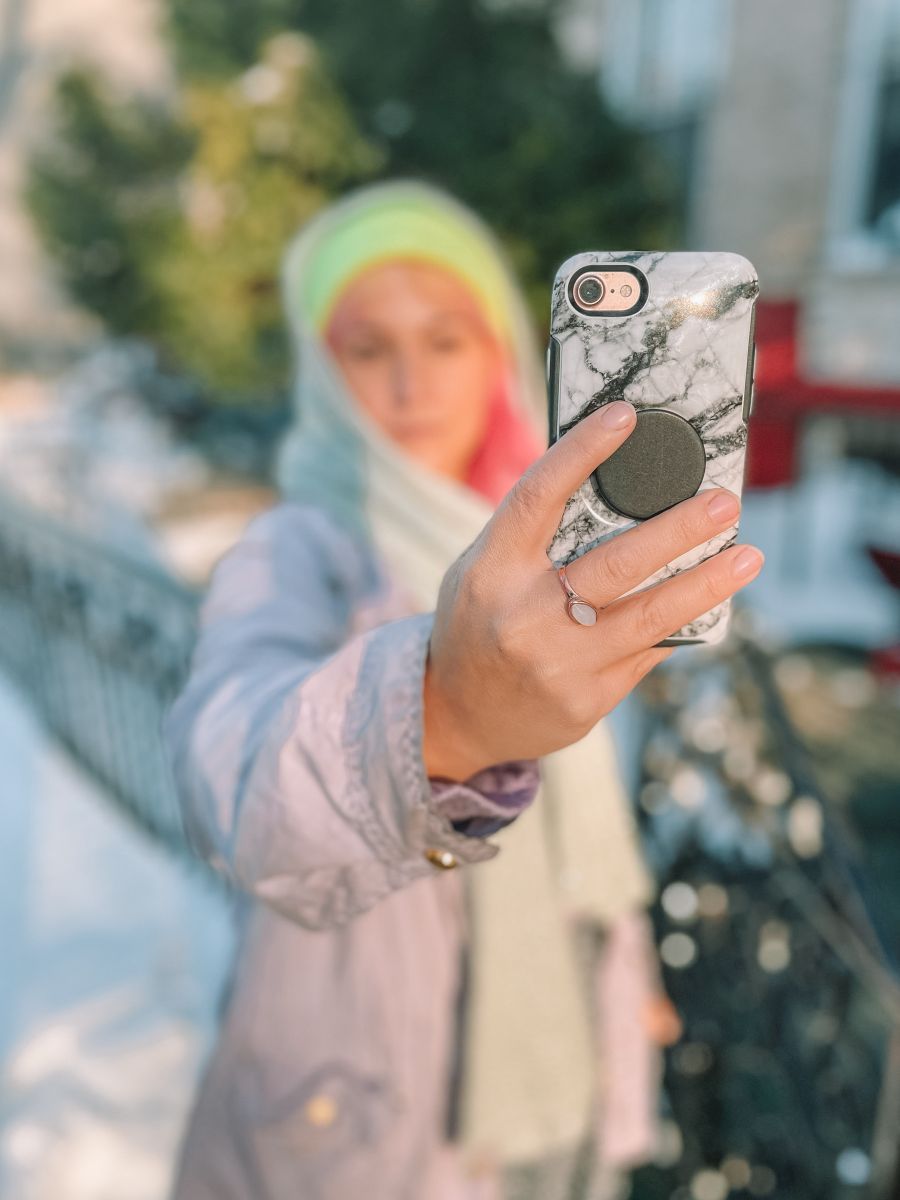
Overview of the Otterbox Symmetry
The Otterbox Symmetry has a rigid polycarbonate backing and a soft, rubbery bumper that runs around the screen’s perimeter.
It has raised edges to protect your phone from drops and an eighth-inch recess around the camera lens so that nothing can poke or scratch it.
While this case doesn’t have built-in screen protection, the side buttons all have covers.
The polycarbonate shell is available in various colors and designs, and the options are variable depending on your smartphone’s make and model.
First Impressions: My Otterbox Symmetry Case
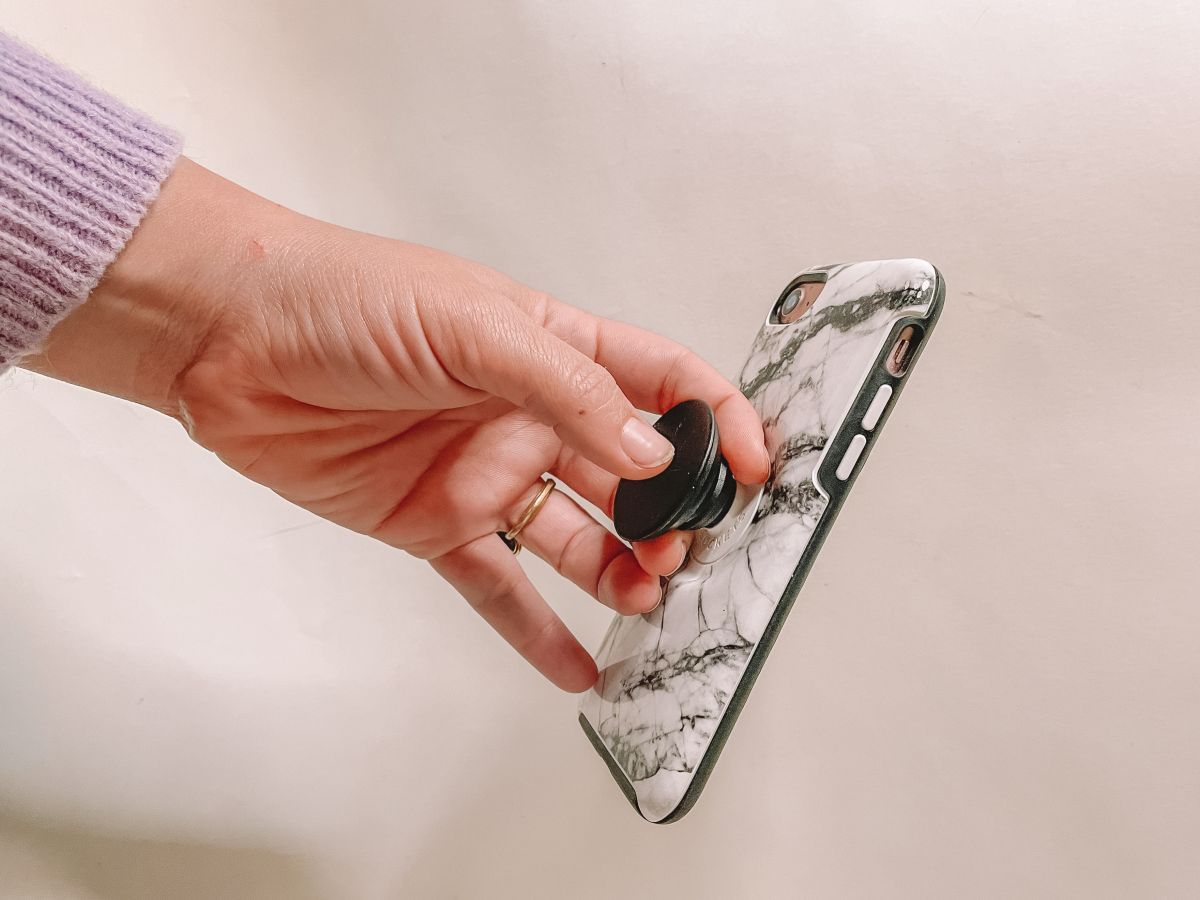
I’ve said it before, and I’ll repeat it: I’m not a fan of a bulky phone case.
I first tested the Otterbox Symmetry after trying out some of Otterbox’s thicker cases.
When I picked up the slim, easy-to-open packaging, I immediately knew that the Symmetry would be more my style.
Like all Otterbox’s products, the Symmetry came in well-designed, recyclable packaging that was easy to slide open.
I have an iPhone 7, so of the design choices available for my smartphone model, I chose a black-and-white marble print. I like this design because it has personality without being too flashy.
I also chose one of the cases from the Otter + Pop Symmetry Series, which is just like the classic Symmetry series case, but with a built-in pop socket.
I’ve never used a pop socket before, but I took to it immediately.
The Symmetry slipped quickly over my phone and fit snugly. I initially noticed and appreciated that the buttons were still super sensitive and responsive under the button covers.
Every other case I’ve used previously seems to bury the buttons so that you have to squeeze quite hard to press them.
With the Otterbox Symmetry, the button covers feel less like covers and more like buttons themselves.
Now that I’d suited up my phone in the Symmetry case, it was time to test it in the field.
Materials & Key Specs
Materials: Polycarbonate and synthetic rubber.
Special features: Slim, one-piece design, built-in pop socket, Qi wireless charging compatible, and car mount compatible.
Fits: Apple phones as old as the iPhone 7 and Samsung phones as old as the Galaxy S20.
Best for: The average young smartphone user with a busy lifestyle.
Main Features
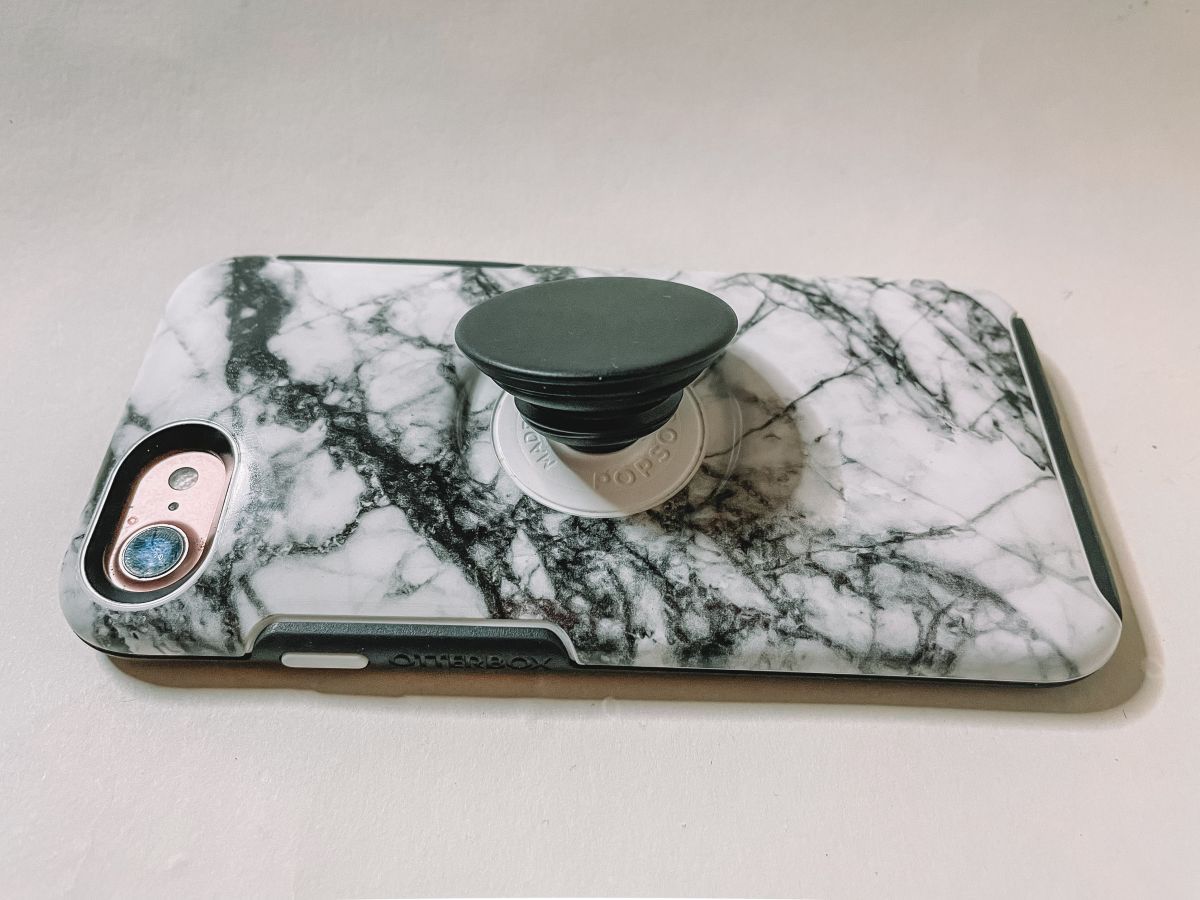
Compared to other Otterbox Cases, the Symmetry offers less extensive protection.
However, compared to my previous $10 case that I bought from a stand outside an Apple store, the Symmetry is much more heavy-duty and protective.
The combination of rigid polycarbonate and flexible rubber provides superior shock absorption compared to other cases.
Any vulnerable part of your phone has a protective raised edge around it, which helps keep your smartphone safe in a slim and sleek package.
Overall, the Symmetry offers deceptively good drop protection in an aesthetically-pleasing package.
As I mentioned above, my model of the Symmetry Series is also part of the Otter + Pop collaboration, so its most prominent feature is the built-in pop socket.
I’m a big fan of the pop socket, and it’s one of the things I like best about this case. It works as a kickstand and is something to lace my fingers through to help prevent drops.
I don’t know if everyone has this problem, but my phone spontaneously slips out of my hand often, and the pop socket helps prevent that from happening.
While the Symmetry is the only case with a pop socket that I tried out, the Otter + Pop collection isn’t limited to the Symmetry series. There are models with built-in pop-sockets available in the Otterbox Defender Series as well.
But, even without the pop-socket, the Symmetry case provides nice grip thanks to the rubber bumper running around the edge of the case, framing the phonescreen.
Another one of the Symmetry cases’ cool features is that it’s compatible with a Qi wireless charger. However, I’ve never used a wireless charger, so I couldn’t test out this feature.
The Otter + Pop Symmetry cases come in mostly pastel solid colors and an outer space print. I chose the white marble.
The available colors and patterns vary pretty widely depending on the make and model of the phone. New iPhones and Galaxy phones have an even more comprehensive range of aesthetic options.
What’s Different About the Symmetry vs Defender?
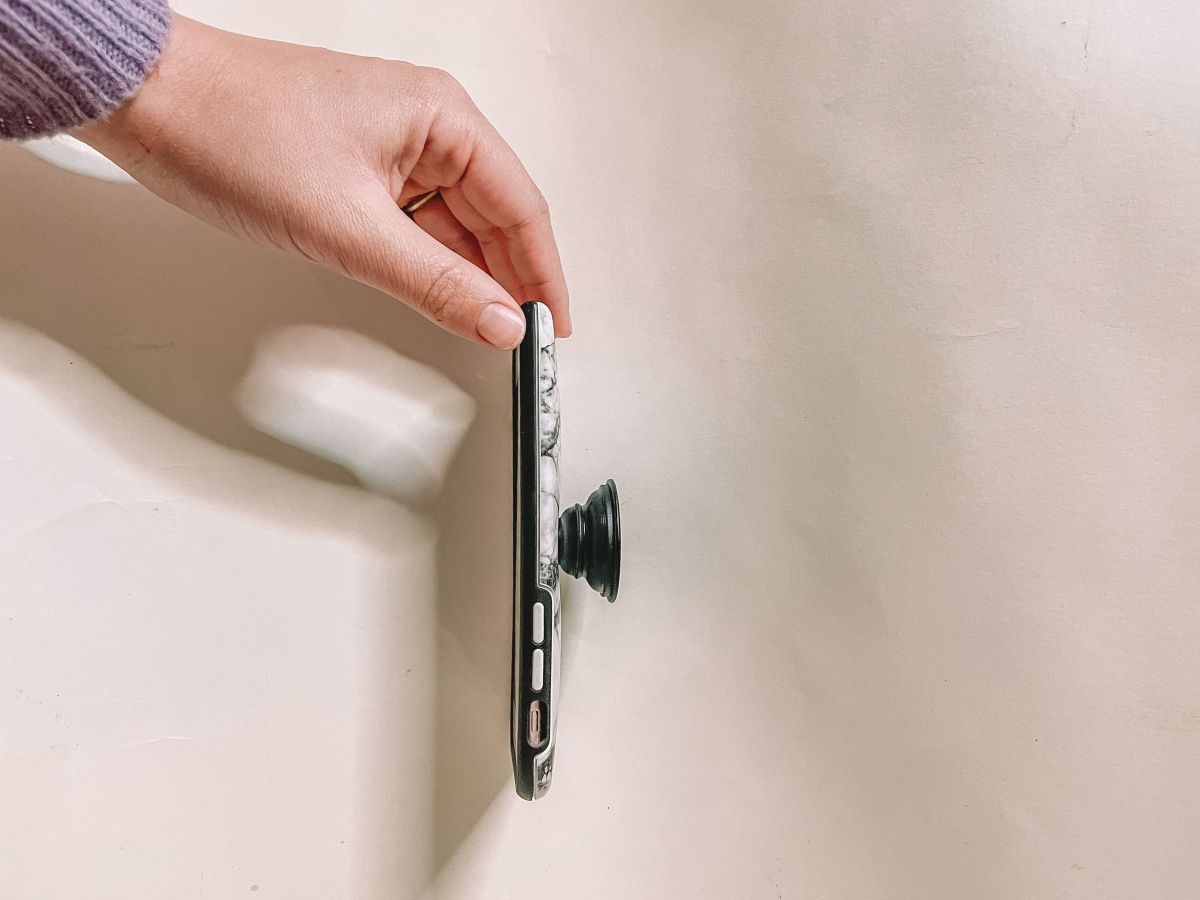
Unlike the Otterbox Defender cases, the Symmetry doesn’t have built-in phone screen protection, and it also doesn’t have port covers.
Both smartphone case series have button covers, although I found them more functional and easy to press on my Symmetry case.
While the Symmetry case combines rubber with polycarbonate, the two materials don’t overlap, so it doesn’t have the same two layers of protection that the Otterbox Defender has.
This also may contribute to how functional the button covers are, as they’re only protected by a single layer.
The Symmetry also doesn’t have the typical look of a super-protective and bulky smartphone case; instead, it has smooth, clean lines.
Interested in another comparison? Read our guide to the Otterbox Symmetry vs Commuter Series.
Who is the Symmetry case for?
The ideal candidate for a Symmetry case is someone like me: a busy young person living in an urban area.
If you’re prone to dropping your phone and you’re looking for something to protect your device while still wanting something comfortable and functional, then the Symmetry might be for you.
It’s ideal if you want to rise above the standard, sub-par protection of a typical smartphone case without feeling like you’re carrying around a brick.
On the other hand, if you have an exceptionally rugged lifestyle and heavy-duty protection is your top concern, then the Symmetry case might not be the ideal choice for you.
Overview of the Otterbox Defender
The Otterbox Defender Series is the quintessential Otterbox phone case.
Defender cases have three layers of heavy-duty protection and include a built-in screen protector. They provide a completely enclosed box for your smartphone.
There are port covers and button covers over every one of your phone’s orifices, so no part of your phone will be open to the outside world. The Defender case also built for resilience, even after super high drops or heavy use.
First Impressions: My Otterbox Defender Case
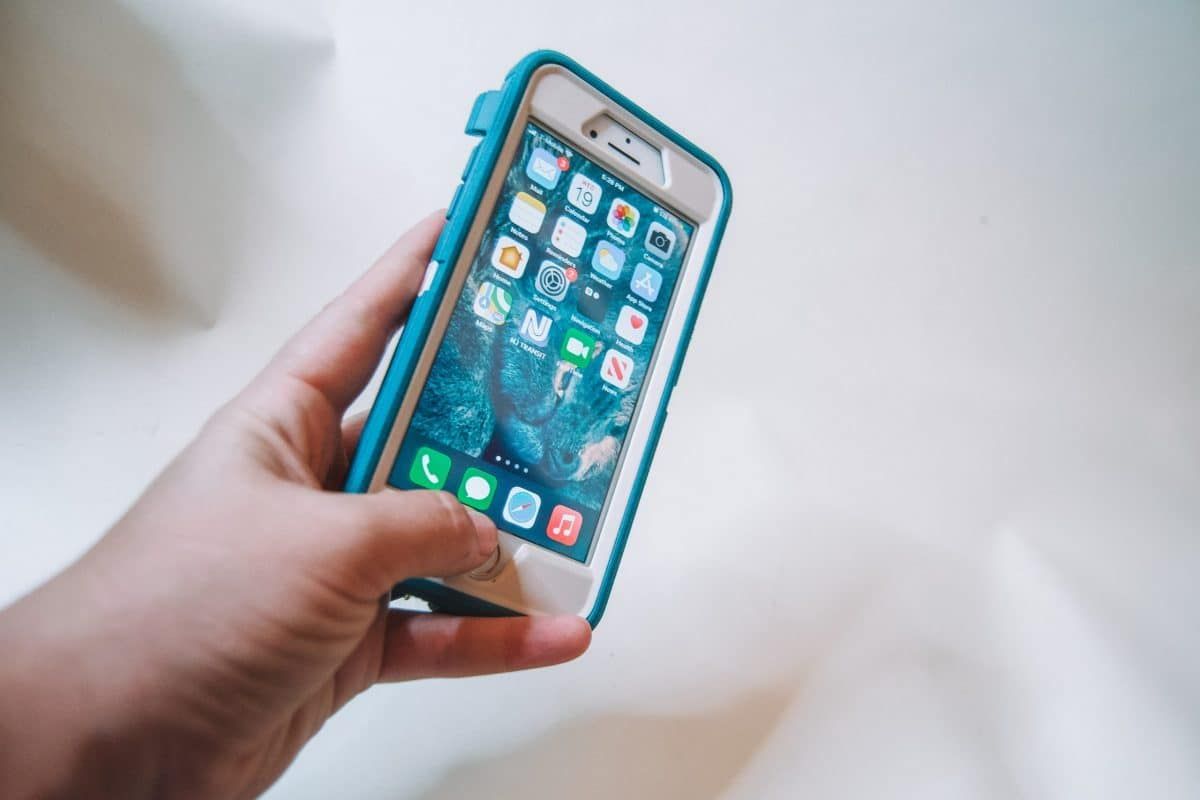
Admittedly, I didn’t have the best first impression of my Otterbox Defender Series case. While I enjoyed the sleek packaging, and I appreciated how easy it was to take it out of the box, things went downhill from there.
I chose a color called “Big Sur,” which is dark blue-green. The rubber outer shell came in this color, while the inner shell was a bone-white. I found the color pretty, albeit a bit plain, and accurate to the photos I’d seen online.
I struggled for a few minutes before I was able to open the inner polycarbonate shell. Eventually, I realized that pushing on the tabs helps to pry them open.
The soft rubber outer layer was a bit easier to install. It fit smoothly into the inner shell’s grooves, and the multiple layers felt perfectly integrated.
But even with just these two pieces, my phone feel jarringly large in my hand. And there was still a rigid polycarbonate holster to add on.
The whole thing was far too large to fit in my pants pocket with the holster, so after about a day, I took it off.
The holster has a belt clip that doubles as a kickstand. So, if I wore a belt and liked to wear my phone on a belt clip, this could have been a helpful feature. However, for my needs, it wasn’t.
I had another negative experience during my first day of using it. A small amount of moisture made its way into the case, which rendered the phone screen unusable. I opened the case and wiped it out, which solved the issue.
To be fair, protection from moisture is the one thing that Otterbox cases make no claim about. They promise superior drop protection and defense against dust and dirt, but not water.
I’m not sure how the moisture got inside; it was a drizzly day in San Francisco, and I spent some time outdoors that day on a long walk. But, I had hoped that such a heavy-duty case would be able to withstand a bit of drizzle.
After a rocky start, I got more used to the case. The moisture issue didn’t happen again, my hands began to acclimate to holding a bulkier case, and I was able to see some of the positive sides of it.
Despite the bulkiness, I knew I could rest assured that the Defender case was going above and beyond to protect my smartphone and keep it safe. I didn’t have to worry if I accidentally dropped it – even onto concrete.
I also found the flexible outer layer to have a pleasant and smooth texture, which in some ways made up for its heft.
Read my complete review of the Otterbox Defender.
Materials & Key Specs
- Materials: Polycarbonate inner and synthetic rubber outer layer.
- Special features: Built-in screen protector, port covers, and three-layer protection.
- Fits: Otterbox makes Defenders for iPhones as old as the iPhone 6, all the way up to the newest model. They make Defenders for Samsung phones as old as the Galaxy A51.
- Best for: Active people with a more rugged lifestyle who want the ultimate protection for their smartphones.
Main Features
The Otterbox Defender Series is all about protection, and this is one of Otterbox’s more rugged phone cases.
It offers multiple layers of protection and complete defense against dust, dirt, or other particles.
With the belt clip holster on, it offers three layers of protection, but even without it, there are a full two layers to protect your smartphone from damage.
The Defender comes with several built-in accessories. The design includes a screen protector, and the phone screen cover is plastic rather than the tempered glass you’ll find in most third-party screen protectors.
This smartphone case also comes with a holster, which you can use as either a belt clip or a kickstand.
There aren’t many accessories you could add to the Otterbox Defender, as it already comes with most of the things you’ll need.
I tried out the classic Defender case, but there’s also a built-in pop-socket model like my Symmetry case. And there’s also a Defender Pro, which has anti-microbial properties.
What’s Different About the Defender vs Symmetry?
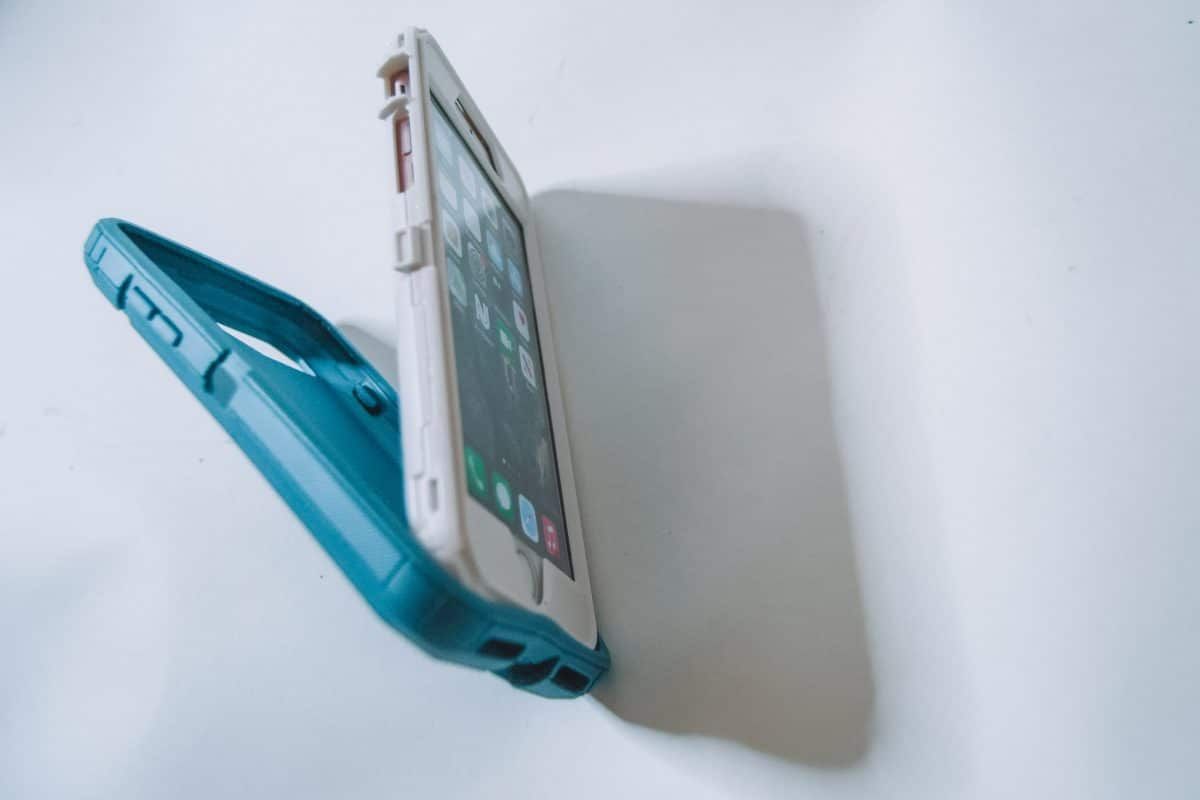
The Symmetry doesn’t have as many protective elements as the Defender and lacks a few of its key features, including a phonescreen protector, port covers, and dual-layer protection.
The Otterbox Defender doesn’t skimp on protective features for your devices, but it’s a decidedly thick case due to the multiple layers of protection.
While it’s not unattractive, the primary focus is not on the aesthetics, and so it has a box-like design compared to the Otterbox Symmetry.
While this design helps add to the case’s protectiveness, it also makes it a somewhat bulky case.
Interested in another comparison? Read our guide to the Otterbox Defender vs Commuter Series.
Who is the Defender case for?
If your number one priority is preventing your phone from damage, then the Otterbox Defender is for you.
This Otterbox case is an ideal choice for someone who has a newer, more expensive phone and who lives a more rugged lifestyle that puts their phone in harm’s way regularly.
For example, perhaps you hike or rock climb frequently, and you love to post photos of your adventures on social media.
Chances are, you have a phone with a high-quality camera, and you often find yourself on dusty trails and rocky cliffsides. If this sounds like you, then you’ll probably love the Otterbox Defender.
Comparing the Otterbox Symmetry vs Defender
Each case has strengths and weaknesses, so to determine which one is best, let’s look at the Otterbox Defender vs Otterbox Symmetry on a point-by-point basis.
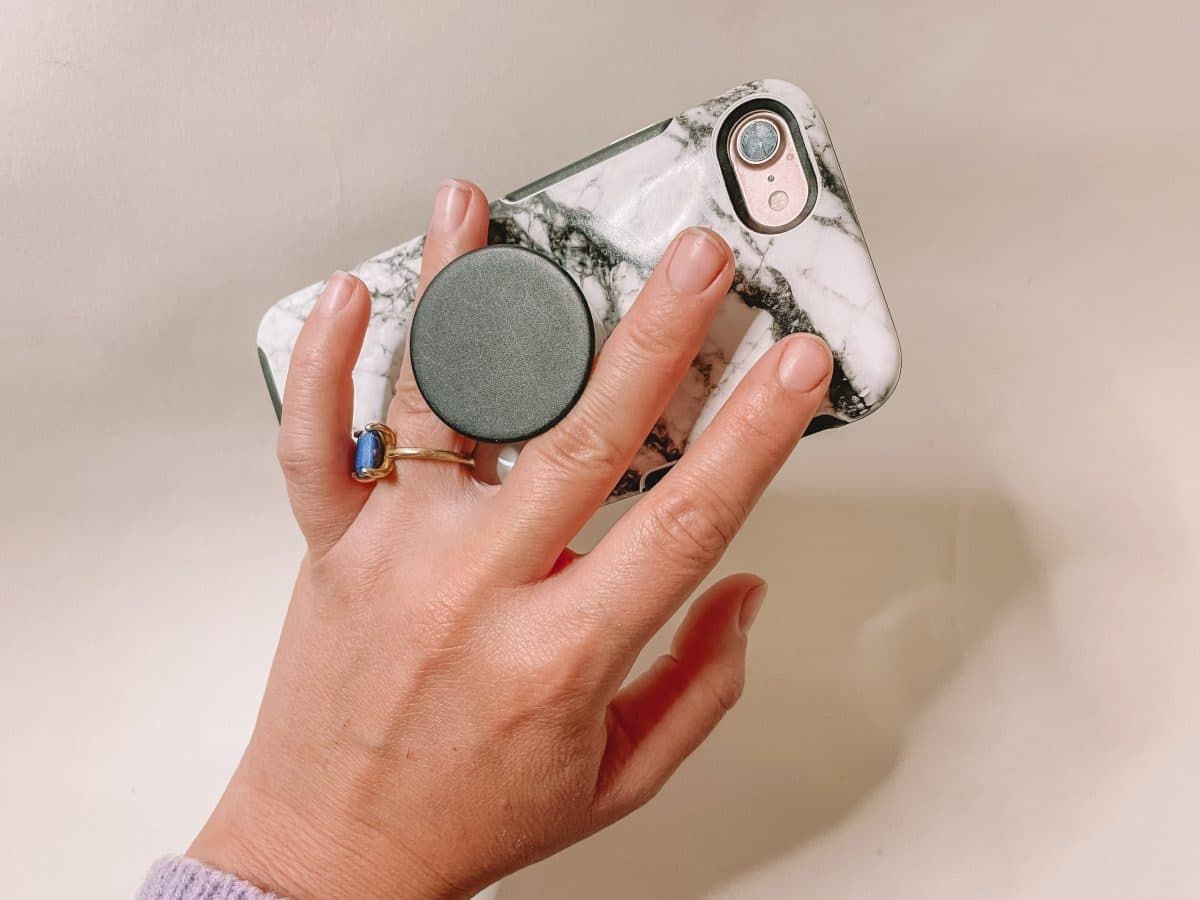
Durability & Protection
Durability and protection are the Otterbox Defender’s area of expertise, so this case is the clear winner in this category.
Every aspect of this smartphone case works overtime to protect the phone, with style and user-friendliness coming second.
The Defender has three layers of heavy-duty protection, which combine hard polycarbonate with a soft rubbery outer layer.
It also has a built-in screen protector and covers that protect the lightning port and the silent mode switch.
When it comes to protecting your phone, Otterbox left no stone unturned with the Defender.
Winner: Defender
Design & Style
While the Defender took the durability and protection category without a fight, the Otterbox Symmetry case sweeps the Design and Style section.
Not only does the Symmetry case’s one-piece design look slimmer and sleeker than the Defender, but it also has a much more comprehensive range of colors and prints.
This makes it easy to choose an Otterbox Symmetry case that fits seamlessly with your personal aesthetic.
Winner: Symmetry
Functionality
Things become less apparent when you compare the functionality of these two phone cases.
The ultimate purpose of any smartphone case is to protect your phone from breaking. The Defender series wins out if we judge a smartphone case’s functionality on how well it performs this duty.
On the other hand, I found the plastic screen protector slightly less responsive to touch than a third-party glass protector. The buttons also felt bulky and required a hard squeeze to push properly.
And while the port protectors kept dirt and dust out of my phone, it also meant I had to use two hands to plug it into the charger, which was a bit cumbersome.
The Otterbox Symmetry, by contrast, has super-responsive button covers and doesn’t have a screen-protector or port covers to dampen my user experience.
In the end, these two phone cases tie for the spot of best overall functionality because they perform well at opposite ends of the spectrum from each other.
Winner: Tie between the Symmetry and the Defender
Number of Options, Variations & Accessories
The Otterbox Defender case comes with built-in accessories.
If you choose the Otterbox Defender, then you must use the built-in screen protector, even if you prefer the feeling of tempered glass.
The Otterbox Symmetry series leaves your options more open by not including as many accessories. You can choose what type of screen protector – if any – you’d like to use.
On top of that, Otterbox Symmetry cases come in more unique colors and prints, while the Defender only has limited, solid-color options.
So, when you compare the Otterbox Defender vs the Otterbox Symmetry cases in terms of options, variations, and accessories, the Otterbox Symmetry series takes the title.
Winner: Symmetry
Price
The price difference between the Otterbox Defender and Symmetry cases isn’t huge.
In fact, my Otterbox Symmetry Series case with the pop-socket costs the same amount as the classic Otterbox Defender case that I tried out.
However, it’s essential to consider that my Otter + Pop Symmetry Series case has an added feature.
The classic Symmetry series case is roughly five dollars cheaper than the classic Otterbox Defender case.
The Otter + Pop Defender series is ten dollars more than the Otter + Pop Symmetry Series case that I have.
So, even though the two particular cases I’m comparing have equal prices, overall, the Symmetry Series is less expensive than the Otterbox Defender series.
Winner: Symmetry
Looking for more durable phone case options? Read our guide to the best Otterbox alternatives.
Conclusion: Otterbox Symmetry Series vs Defender Series – Which One is Better?
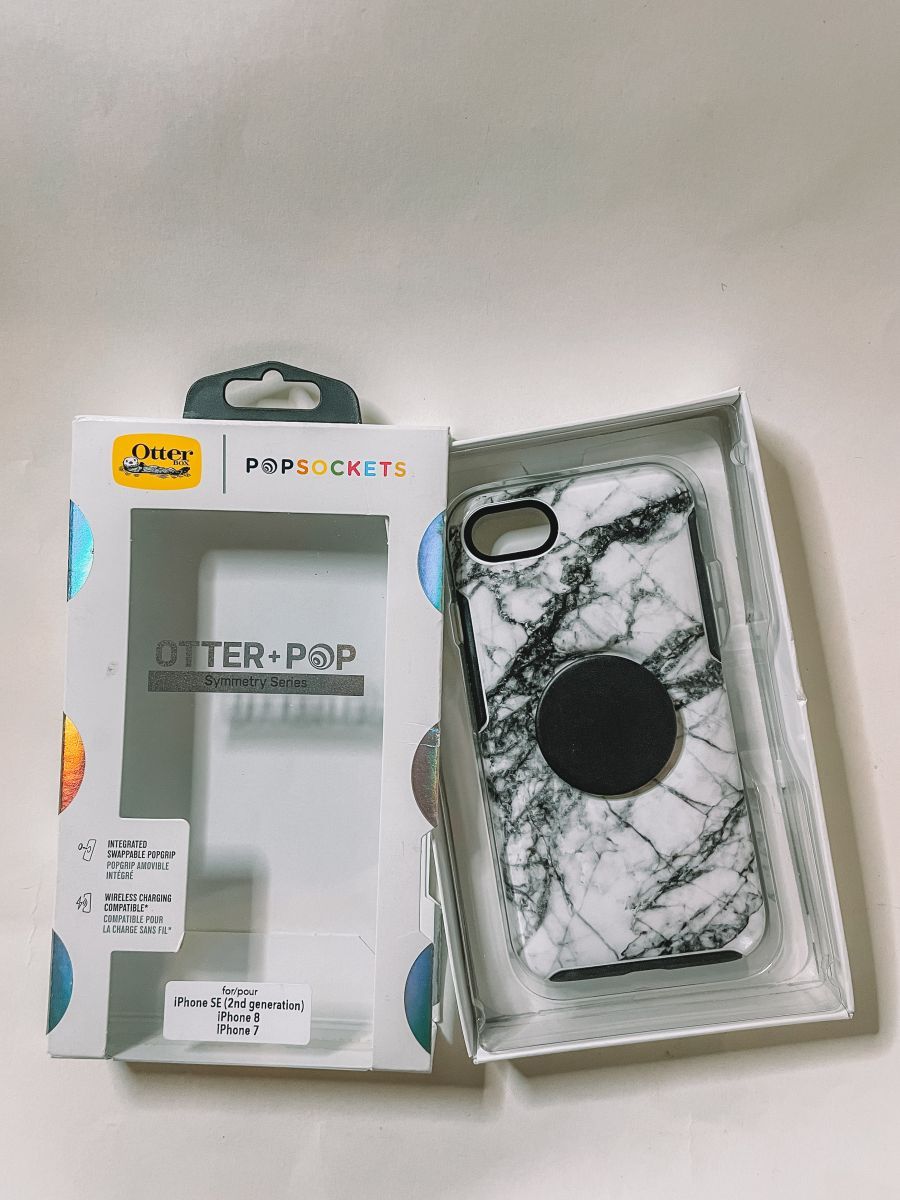
The time has come to pick the winning Otterbox case. Will rugged protection or sleek design come out on top?
Looking at the Otterbox Defender vs Symmetry cases side-by-side, they certainly both have merits and disadvantages.
Ultimately, your particular tastes and needs will determine whether the Symmetry or Defender case is the best case for you.
For me, however, the Otterbox Symmetry series was–hands-down–my favorite out of all three Otterbox cases that I tried out.
But it’s crucial to note my particular priorities regarding phone cases because that’s what swayed my decision.
I carry my phone in one hand and use my thumb to scroll and type, which is now ingrained in my muscle memory.
The ease with which I use my device depends on this muscle memory. For me, convenient access and ease of use are my prime concerns with a phone case.
While I appreciated how thorough the Otterbox Defender Series’ three layers of protection were, they added several centimeters to the size of my phone. That was enough to disrupt my tactile experience completely.
I have small hands, so with the Otterbox Defender Series, I could no longer hold my phone in one hand to scroll. I also couldn’t plug it into the charger with one hand and pushing the side buttons took an extra-hard squeeze.
I don’t have the most rugged lifestyle, and I rarely take my phone into overly-risky situations, so I don’t feel the need to go above and beyond with protection.
Admittedly, I drop my phone near-constantly, so I need my case to have drop protection.
However, the Symmetry series’ raised edge and sturdy construction still does an excellent job of keeping my phone safe compared to other phone cases I’ve had in the past.
After several months of use now, I’ve noticed that the hard polycarbonate shell has scratches and scrapes on the corners.
While this means Symmetry cases are perhaps not as durable as I wish they were, it also speaks to the number of times I’ve dropped my phone since I started using the Symmetry.
Additionally, not only does the Symmetry series feel better and function better for me than the Otterbox Defender Series, but it also has a more stylish design.
I’m a visual person and I love to have accessories that fit my personal style.
And lastly, while they’re pretty comparable when it comes to price, the Symmetry cases are a little bit cheaper, which further helps to give them an edge over the Defender cases.
With that said, the Otterbox Defender Series is an excellent choice for someone who values protection above all else or lives a more rugged lifestyle and therefore needs more protection for their smartphone.
For me, however, the Otterbox Defender is a bulkier case than the Otterbox Symmetry, and that doesn’t outweigh the advanced dirt and drop protection that it offers.
Whether you decide to put form or function first, either one of these two cases will make your life easier by protecting your smartphone from high drops to everyday bumps.
ABOUT THE AUTHOR

Elina Ansary
Editor
Elina Ansary is a visual artist, writer, teacher, and avid traveler who grew up in San Francisco, CA. Elina’s offbeat, colorful sense of style has been a mode of self-expression for as long as she can remember. Shopping at thrift stores is a favorite pastime, and shopping online is her addiction. When she isn’t writing and editing for The Atlas Heart, Elina is pursuing a Master’s degree in Visual Art at Cornell University and splits her time between Ithaca and Brooklyn.
Looking for more gear recommendations? Read our related articles below!
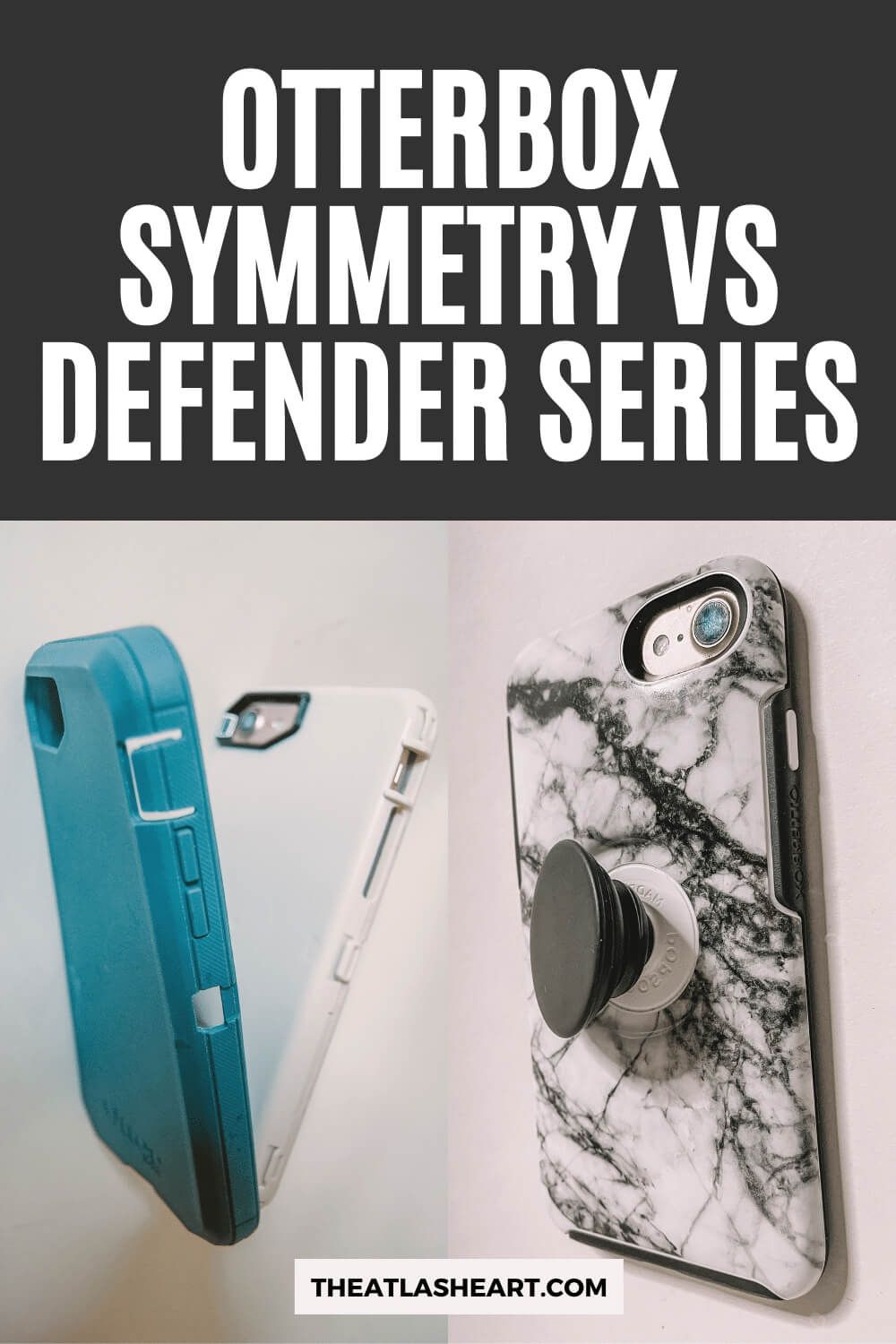
Pin this image for future reference

